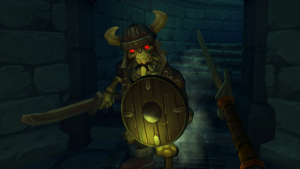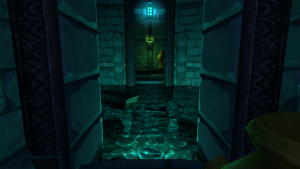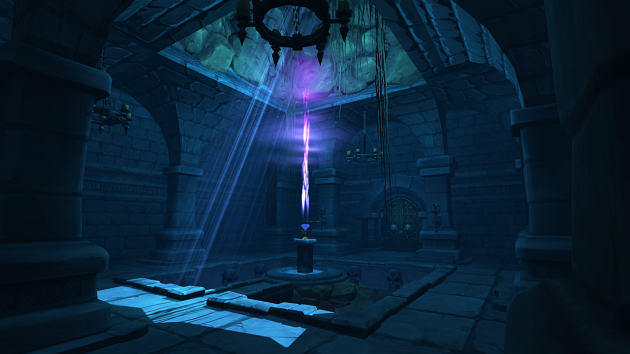Vanishing Realms: Rite of Steel is certain to get a lot of attention due to it’s connections to Valve’s internal legacy. Kelly Bailey, former Senior Game Designer of Sound and Music, is now working independently on the title under the guise of Indimo Labs, and by all accounts his appearance at this year’s Game Developers Conference (GDC), San Francisco, was as much of a surprise to him as it was a pleasure for us.
A first-person role-playing game (RPG) set in a fantasy world, the most immediate and obvious comparison for Vanishing Realms: Rite of Steel is Bethesda Softworks’ The Elder Scrolls: Oblivion. Thankfully, it’s not too much of a leap to suggest that Vanishing Realms: Rite of Steel is the closest we’ve come to The Elder Scrolls in virtual reality (VR). If that doesn’t pique your interest, you’re probably in the wrong place right now.
The demonstration version of Vanishing Realms: Rite of Steel playable at GDC began with a brief tutorial; collecting coins and picking up items, using the equipment backpack and the teleportation mechanic. The latter is very simplified compared to many other titles, but works wonderfully. A short range but very swift movement that has no disorientation effects, quickly teleporting several times in quick succession is a skill that’s learned early on; and one that proves very beneficial in combat.
There’s a lot of walking in Vanishing Realms: Rite of Steel, as you might imagine, so being able to teleport quickly and precisely is important. It was suggested to VRFocus that the entire videogame could be played without taking a single step, however the experience was significantly better when minor single-step movements were handled by the player’s own physicality and larger, quicker progression through the teleportation mechanic.

Vanishing Realms: Rite of Steel soon gives the player a weapon; despite collecting plenty of valuable currency only the most basic of swords was available. This can be equipped to either hand, and motion-control is extremely close to being 1:1. Learning the nuances of sword fighting via the HTC Vive may not win you any fencing awards, but it’s not long before the basic skills to control accurate swipes and blows are developed. Vanishing Realms: Rite of Steel‘s combat begins very slowly, gifting the player an opportunity to learn against single opponents who are slow to react. However, there certainly is plenty of potential for greater challenges later in the videogame.
Exploration of the world sees the player travelling through dungeon rooms, facing minor puzzle challenges and navigating the environment through memory of their previously visited locations. The cartoon style visual design – somewhat similar to that of Oculus VR’s Herobound – may disappoint some, but in VRFocus‘ opinion it’s pitched perfectly to allow for clear understanding of positioning and direction within the world and also likely easier for Indimo Labs to maintain that all important framerate. Pilling in more detail may widen the potential audience, but it could also stutter the development process. Frankly, VRFocus would rather Vanishing Realms: Rite of Steel is delivered sooner than opt for a more realistic visual design.

The brief gameplay demonstration that VRFocus experienced at GDC is a part of the Steam Early Access version that will be launching alongside the HTC Vive itself next month. It’s rare that a preview build would entice VRFocus to suggest that readers intrigued by a title make the jump into a product before it’s finished, but Vanishing Realms: Rite of Steel was without a doubt one of the most exciting videogame titles at GDC. We’ll have more coverage of Indimo Labs’ work coming soon, but getting hands-on time with Vanishing Realms: Rite of Steel for yourself is certainly an opportunity that shouldn’t be passed up.















